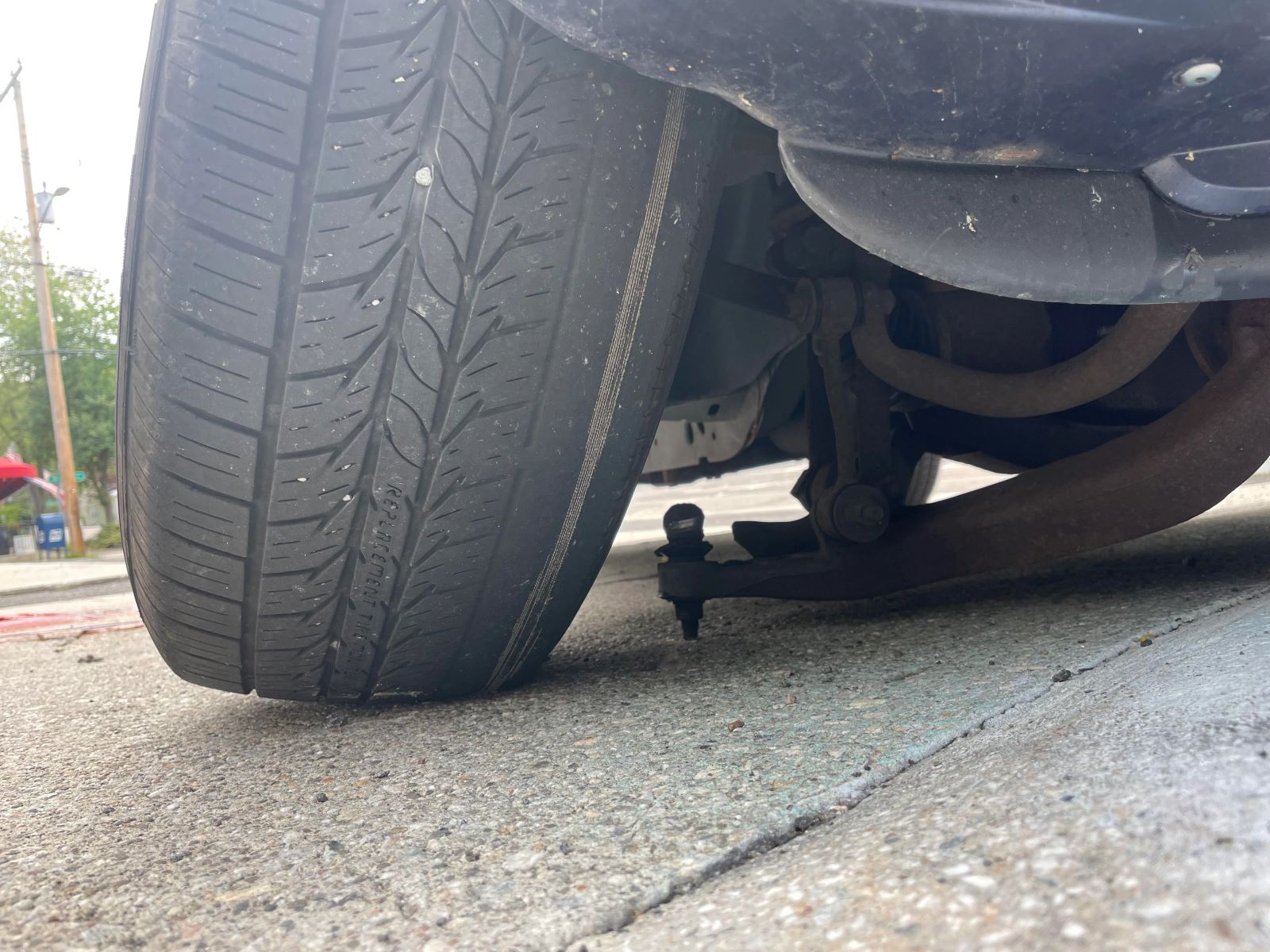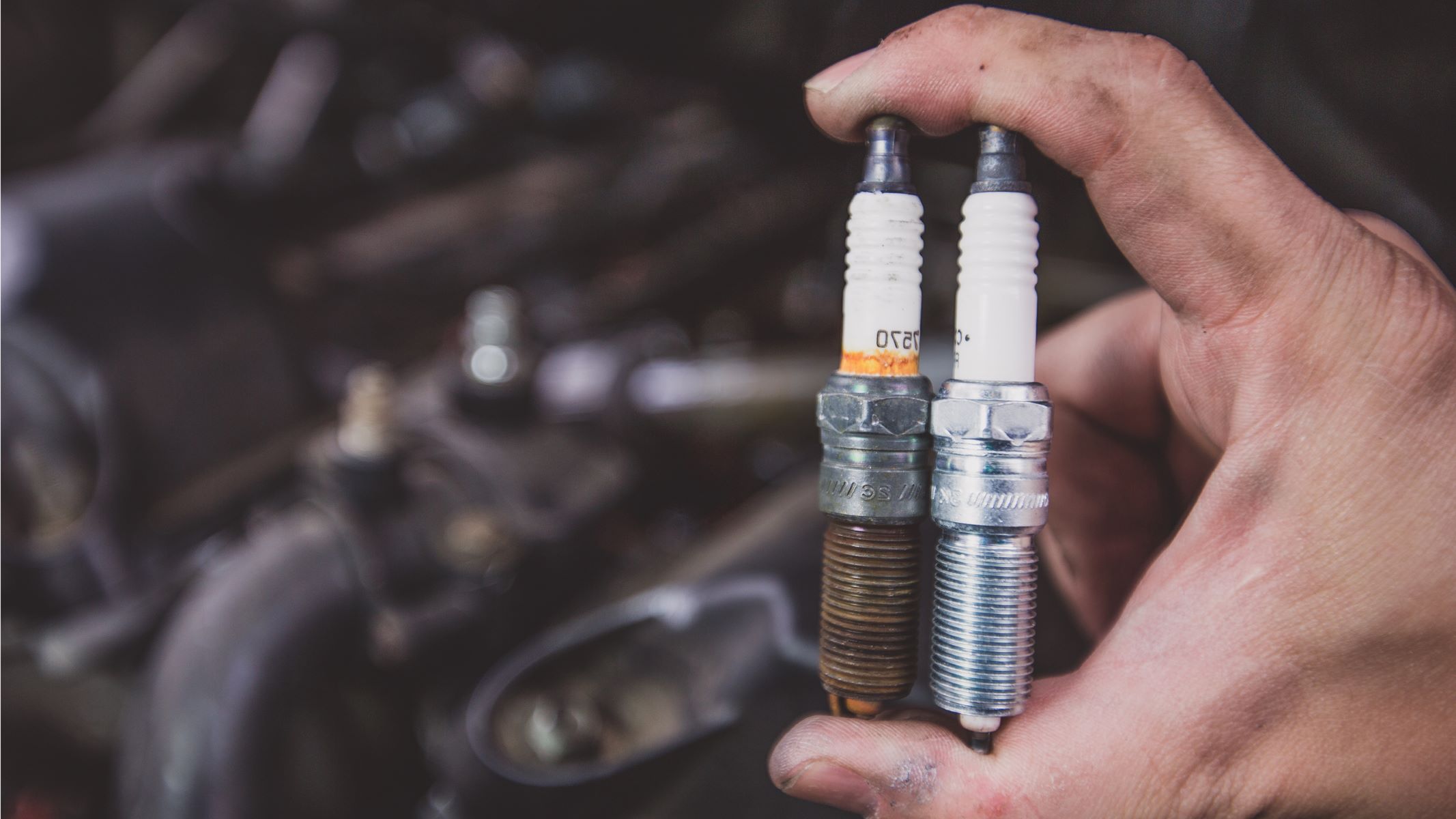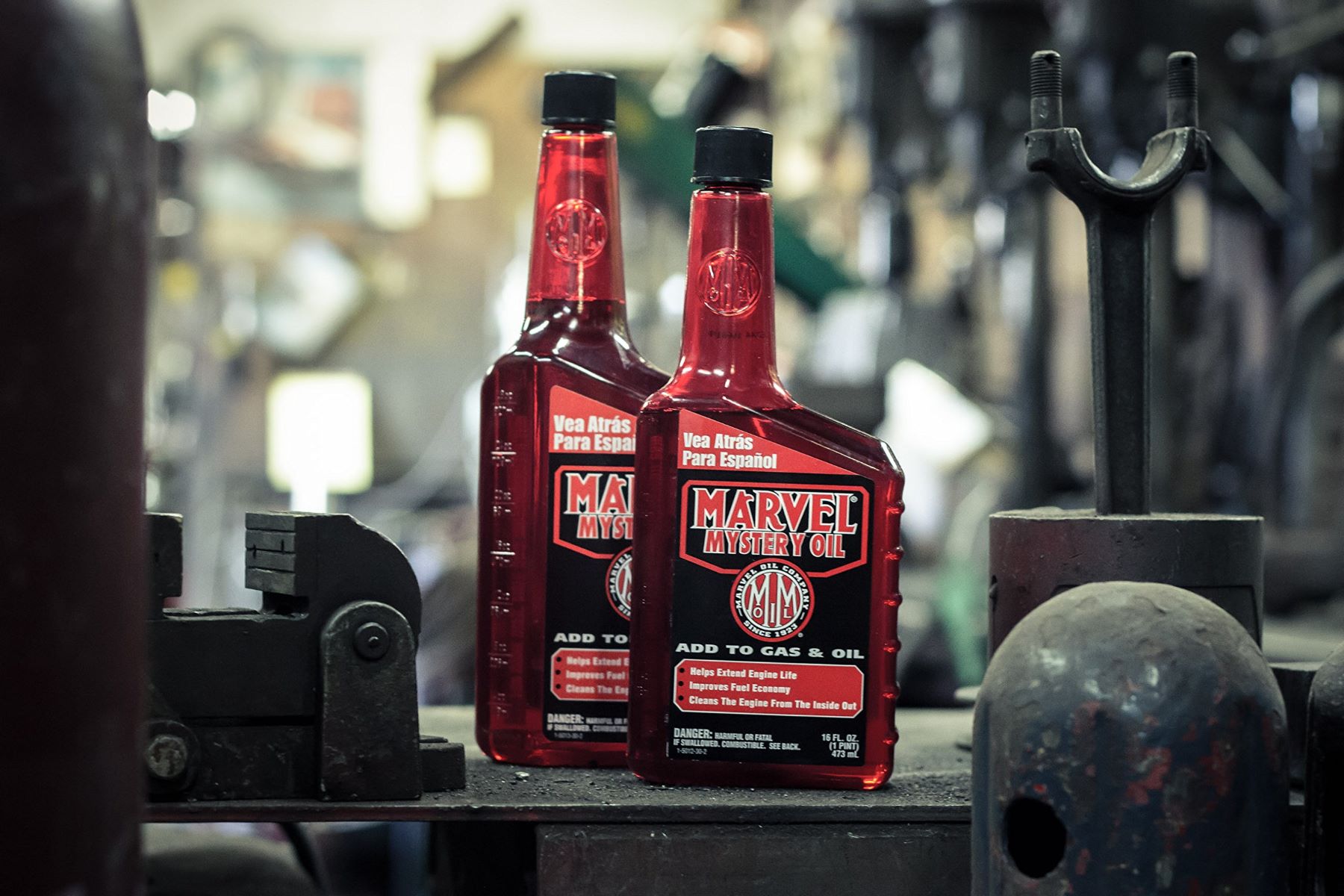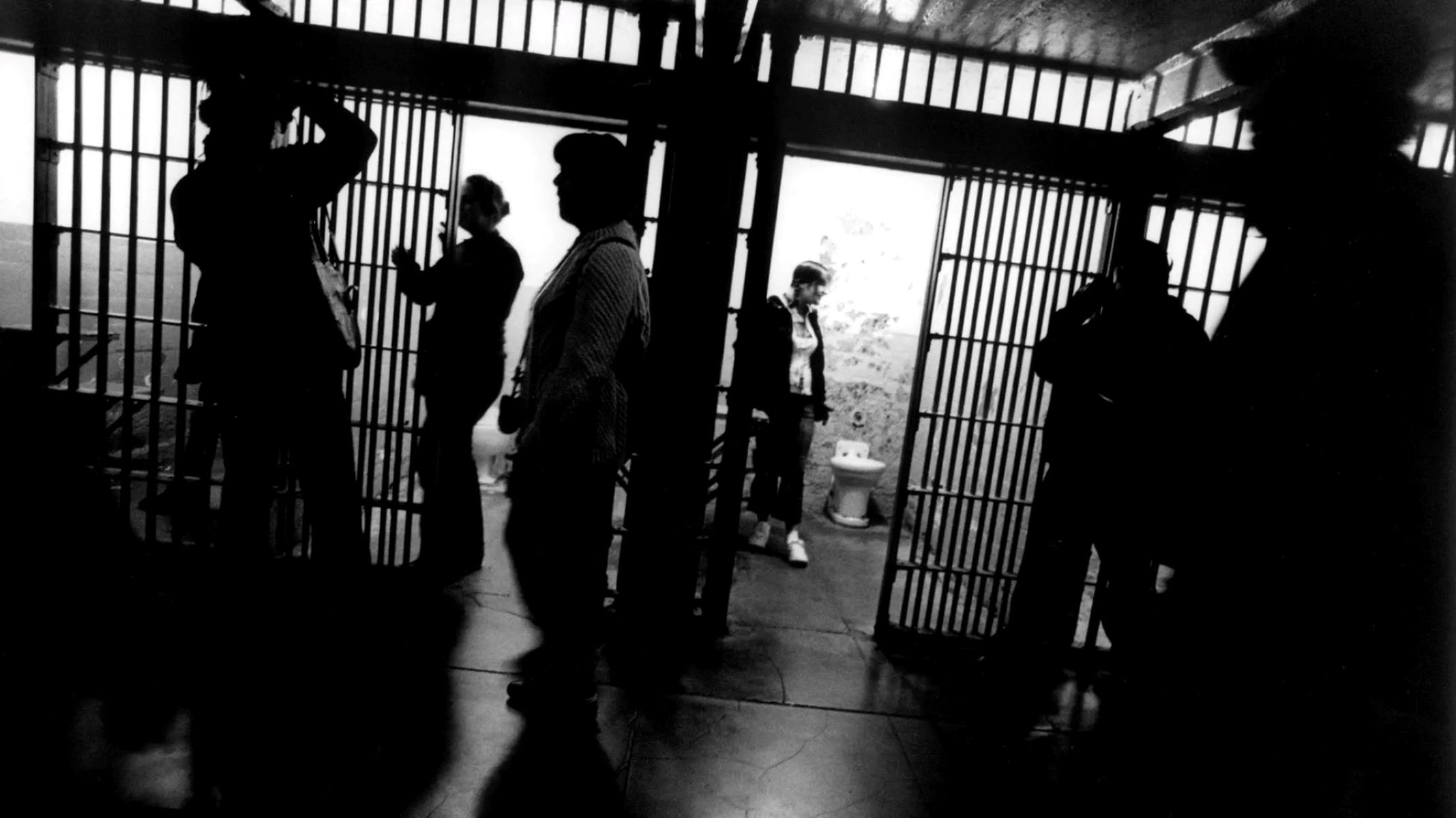Home>Automotive>The Terrifying Consequences Of A Broken Drive Shaft While Driving


Automotive
The Terrifying Consequences Of A Broken Drive Shaft While Driving
Published: February 17, 2024
Discover the terrifying consequences of a broken drive shaft while driving and how to prevent it. Stay safe on the road with essential automotive maintenance tips.
(Many of the links in this article redirect to a specific reviewed product. Your purchase of these products through affiliate links helps to generate commission for Regretless.com, at no extra cost. Learn more)
Table of Contents
Introduction
A broken drive shaft while driving can lead to catastrophic consequences, posing a significant threat to both the vehicle and its occupants. Understanding the potential dangers of drive shaft failure and being able to recognize the warning signs are crucial for maintaining safety on the road. In this article, we will delve into the intricacies of drive shafts, explore the causes of failure, and shed light on the terrifying repercussions of experiencing a broken drive shaft while in motion. Additionally, we will discuss how to effectively handle such an emergency situation and provide valuable insights into preventing drive shaft failure. By gaining a deeper understanding of this critical component, drivers can take proactive measures to ensure the integrity of their drive shafts, thereby safeguarding themselves and others from the perils associated with drive shaft malfunctions.
What is a Drive Shaft?
A drive shaft, also known as a propeller shaft, is a vital component of a vehicle's drivetrain system. It plays a pivotal role in transferring power from the engine to the wheels, enabling the vehicle to move forward. Typically, drive shafts are found in rear-wheel-drive and four-wheel-drive vehicles, as they are responsible for transmitting torque from the transmission to the differential, which then propels the wheels.
In essence, the drive shaft serves as a mechanical link between the transmission and the wheels, ensuring that power is effectively distributed to facilitate movement. It is commonly a hollow steel tube with universal joints at each end, allowing for flexibility and accommodating the vertical and horizontal movement of the suspension system.
The drive shaft's design and construction are engineered to withstand the immense torque and rotational forces generated by the engine, making it a robust and durable component. However, despite its resilience, the drive shaft is susceptible to wear and tear over time, especially in high-stress driving conditions or as a result of inadequate maintenance.
Given its critical function in the vehicle's propulsion, a properly functioning drive shaft is essential for safe and efficient driving. Understanding the significance of the drive shaft in the overall operation of a vehicle is imperative for drivers and automotive enthusiasts alike. With this knowledge, individuals can appreciate the role of the drive shaft in the seamless transfer of power within the drivetrain, fostering a deeper understanding of the complexities involved in vehicle propulsion systems.
Causes of Drive Shaft Failure
The drive shaft, while designed to endure substantial mechanical stress, is susceptible to various factors that can lead to failure. Understanding the potential causes of drive shaft malfunction is crucial for preemptive maintenance and avoiding catastrophic breakdowns. Here are the primary factors contributing to drive shaft failure:
-
Lack of Lubrication: Inadequate lubrication of the universal joints and slip yoke can result in excessive friction and wear. Over time, this can lead to the degradation of the drive shaft components, ultimately causing failure.
-
Excessive Wear and Tear: Continuous exposure to high torque and rotational forces can lead to gradual wear of the drive shaft components. This wear is exacerbated by harsh driving conditions, such as off-road terrain or heavy towing, accelerating the deterioration of the drive shaft.
-
Imbalance: An imbalanced drive shaft can cause vibrations that place undue stress on the universal joints and bearings. This imbalance can stem from damaged or improperly installed components, leading to premature wear and potential failure.
-
Corrosion: Exposure to moisture, road salt, and other corrosive elements can cause the drive shaft to corrode over time. Corrosion weakens the structural integrity of the shaft, making it more susceptible to fractures and failure.
-
Impact Damage: Striking road debris, potholes, or other obstacles can cause significant impact damage to the drive shaft. This sudden force can result in dents, bends, or fractures, compromising the drive shaft's functionality and integrity.
-
Overloading: Exceeding the recommended weight capacity or towing limits can place excessive strain on the drive shaft, leading to accelerated wear and potential failure of its components.
-
Improper Maintenance: Neglecting regular inspections, lubrication, and maintenance of the drive shaft can result in undetected issues that may escalate into critical failures over time.
By recognizing these potential causes of drive shaft failure, drivers and automotive professionals can proactively address and mitigate these factors, thereby extending the longevity and reliability of the drive shaft. Regular inspections, proper maintenance, and adherence to weight limits and driving conditions are essential for preventing drive shaft failures and ensuring safe and efficient vehicle operation.
Signs of a Failing Drive Shaft
Identifying the warning signs of a failing drive shaft is imperative for preemptive maintenance and averting potentially hazardous situations on the road. While drive shafts are engineered for durability, they are not immune to wear and tear. Recognizing the subtle indicators of impending drive shaft failure can empower drivers to take proactive measures, ensuring the safety and reliability of their vehicles. Here are the key signs to watch out for:
1. Vibrations:
A prominent symptom of a failing drive shaft is the onset of vibrations, especially during acceleration. These vibrations may intensify as the vehicle gains speed and can be felt through the steering wheel or the floor of the vehicle. The presence of persistent vibrations, particularly during acceleration, warrants immediate inspection of the drive shaft components.
2. Abnormal Noises:
Unusual sounds emanating from the underside of the vehicle, such as clunking, rattling, or metallic clicking, can signify potential issues with the drive shaft. These noises may become more pronounced during sharp turns or when transitioning from acceleration to deceleration. Any abnormal sounds originating from the drivetrain should be promptly addressed to prevent further damage.
3. Difficulty Turning:
A failing drive shaft can impede the vehicle's maneuverability, causing difficulty in steering, especially when making sharp turns. This may manifest as a sensation of resistance or stiffness in the steering wheel, indicating underlying issues with the drive shaft or its associated components.
4. Uneven Tire Wear:
Irregular or uneven tire wear patterns can be indicative of drive shaft problems. Excessive wear on one side of the tires, often accompanied by noticeable vibrations, may signal an imbalance or misalignment within the drive shaft assembly.
5. Grease Leakage:
The presence of grease or oil around the universal joints or the center support bearing of the drive shaft can be a clear indication of a failing component. Leakage of lubricants suggests potential damage or wear within the drive shaft, necessitating immediate attention to prevent further deterioration.
6. Visible Damage:
Visual inspection of the drive shaft may reveal signs of physical damage, such as dents, bends, or corrosion. Any visible deformities or irregularities in the drive shaft structure should be addressed promptly to prevent potential failure while driving.
By remaining vigilant for these warning signs, drivers can proactively address drive shaft issues before they escalate into critical failures. Timely detection and remediation of drive shaft problems are essential for maintaining the safety, performance, and longevity of the vehicle's drivetrain system. Regular inspections and prompt attention to these warning signs can mitigate the risks associated with drive shaft failure, ensuring a secure and smooth driving experience.
The Dangers of a Broken Drive Shaft While Driving
A broken drive shaft while driving can unleash a cascade of terrifying and potentially life-threatening consequences. As a critical component of a vehicle's drivetrain system, the drive shaft plays an instrumental role in transmitting power from the engine to the wheels, facilitating motion and propulsion. However, when a drive shaft fails while the vehicle is in motion, the ramifications can be catastrophic.
The sudden rupture or disintegration of a drive shaft while driving can lead to a loss of power transmission to the wheels, resulting in an abrupt loss of propulsion. This can be particularly perilous when driving at high speeds or navigating busy roadways, as the vehicle's ability to accelerate or maintain speed is compromised. The loss of propulsion can swiftly transform a routine drive into a harrowing ordeal, especially if it occurs in adverse weather conditions or on treacherous terrain.
Moreover, a broken drive shaft can induce severe vibrations and jolting movements within the vehicle, potentially causing the driver to lose control. These erratic movements can lead to instability and compromised handling, significantly increasing the risk of a loss-of-control scenario, endangering the vehicle's occupants and other road users.
The dislodgment or detachment of a broken drive shaft can also pose a grave threat to the vehicle and its surroundings. The uncontrolled movement of the fractured drive shaft can inflict substantial damage to the undercarriage, transmission, and other critical components, exacerbating the extent of the mechanical failure and magnifying the potential hazards.
Furthermore, the liberation of a broken drive shaft while in motion can result in hazardous road debris, posing a hazard to following vehicles and pedestrians. The scattering of fragmented drive shaft components on the roadway can create a perilous environment, increasing the likelihood of accidents and collisions for unsuspecting motorists.
In addition to the immediate dangers posed by a broken drive shaft, the subsequent loss of control and potential collisions can lead to grave injuries and fatalities. The sudden incapacitation of a vehicle due to drive shaft failure can trigger a chain of events with far-reaching and devastating consequences, underscoring the critical importance of maintaining the integrity and functionality of the drive shaft.
In essence, the dangers of a broken drive shaft while driving are multifaceted and alarming, encompassing not only the immediate mechanical repercussions but also the potential for catastrophic accidents and injuries. Recognizing the severity of these dangers underscores the imperative of proactive maintenance, regular inspections, and swift remediation of any drive shaft issues. By understanding the perils associated with drive shaft failure, drivers can prioritize the upkeep of this critical component, thereby mitigating the risks and safeguarding themselves and others from the terrifying consequences of a broken drive shaft while driving.
How to Handle a Broken Drive Shaft Emergency
Experiencing a broken drive shaft while driving is a daunting scenario that demands swift and decisive action to mitigate potential hazards and ensure the safety of the vehicle's occupants and other road users. In the event of a broken drive shaft emergency, drivers are confronted with a critical situation that requires a calm and methodical approach. Here are essential steps to handle a broken drive shaft emergency effectively:
-
Control the Vehicle: As soon as the driver becomes aware of the drive shaft failure, it is imperative to maintain composure and focus on controlling the vehicle. Gradually reduce speed while carefully maneuvering to the side of the road or a safe stopping point. Engage hazard lights to alert other motorists of the emergency situation.
-
Avoid Abrupt Movements: It is crucial to avoid sudden or abrupt steering inputs and braking, as these actions can exacerbate the instability caused by the broken drive shaft. Smooth and gradual maneuvers can help mitigate the risk of loss of control and further mechanical damage.
-
Secure the Area: Once the vehicle is safely positioned, take measures to secure the immediate area. Utilize warning triangles or flares to alert approaching traffic and create a safe buffer zone around the disabled vehicle. This precaution is vital for preventing potential collisions and ensuring the safety of all individuals involved.
-
Assess the Damage: Conduct a visual inspection of the drive shaft and its associated components, if it is safe to do so. Look for signs of dislodgment, damage to the undercarriage, or any loose debris resulting from the drive shaft failure. However, it is essential to prioritize personal safety and refrain from attempting repairs on the roadside, especially in high-traffic areas.
-
Seek Assistance: Contact roadside assistance, a towing service, or emergency services to request professional support. Communicate the details of the drive shaft failure and the vehicle's location to facilitate a prompt and appropriate response. If available, utilize a mobile phone or emergency roadside assistance app to streamline the assistance process.
-
Exercise Caution during Towing: If the vehicle requires towing, ensure that the towing service is informed of the drive shaft failure and its potential impact on the vehicle's drivetrain. Emphasize the need for caution during towing to prevent further damage to the vehicle and its components.
-
Professional Inspection and Repairs: Once the vehicle is transported to a repair facility, enlist the expertise of qualified automotive professionals to conduct a comprehensive inspection and effectuate the necessary repairs. Thoroughly assess the drivetrain system, including the drive shaft, differential, and associated components, to identify any additional damage or underlying issues.
By adhering to these proactive measures and maintaining a composed and cautious approach, drivers can effectively navigate a broken drive shaft emergency, minimize the associated risks, and expedite the resolution of the mechanical issue. Prioritizing safety, seeking professional assistance, and exercising prudence throughout the handling of the emergency are paramount for safeguarding all individuals involved and mitigating the impact of the drive shaft failure.
Preventing Drive Shaft Failure
Preventing drive shaft failure is essential for maintaining the safety, reliability, and longevity of a vehicle's drivetrain system. By implementing proactive measures and adhering to prudent maintenance practices, drivers can significantly reduce the risk of drive shaft malfunctions and the potentially catastrophic consequences associated with such failures.
Regular Inspections and Maintenance
Regular inspections of the drive shaft and its associated components are paramount for early detection of potential issues. This includes examining the universal joints, slip yoke, center support bearing, and the drive shaft itself for signs of wear, damage, or corrosion. Additionally, ensuring proper lubrication of the universal joints and slip yoke is crucial for minimizing friction and preventing premature wear.
Balanced Drivetrain and Alignment
Maintaining proper drivetrain balance and alignment is instrumental in preventing undue stress on the drive shaft components. Imbalanced or misaligned drivetrain systems can lead to vibrations and increased wear on the drive shaft, ultimately culminating in failure. Periodic checks and adjustments to the drivetrain balance and alignment are essential for preserving the integrity of the drive shaft.
Adhering to Weight Limits and Driving Conditions
Respecting the vehicle's weight limits and recommended driving conditions is pivotal for preventing drive shaft overloading and excessive strain. Exceeding the specified weight capacity or subjecting the vehicle to harsh driving conditions, such as off-road terrain or towing beyond the designated limits, can accelerate drive shaft wear and compromise its functionality. Adhering to these guidelines mitigates the risk of drive shaft failure.
Corrosion Prevention and Protection
Shielding the drive shaft from corrosion is essential for preserving its structural integrity. Applying protective coatings or utilizing corrosion-resistant materials can safeguard the drive shaft from the detrimental effects of moisture, road salt, and other corrosive elements. Routine inspections for signs of corrosion and prompt remediation are crucial for preventing corrosion-related drive shaft failures.
Professional Servicing and Repairs
Engaging qualified automotive professionals for regular servicing and addressing any drivetrain-related issues is imperative for preventing drive shaft failure. Professional inspections, maintenance, and repairs, including drivetrain component replacements when necessary, ensure that the drive shaft and its associated parts remain in optimal condition, reducing the likelihood of unexpected failures.
By diligently implementing these preventive measures, drivers can fortify the durability and reliability of their vehicle's drive shaft, mitigating the risks associated with drive shaft failure and fostering a safer and more secure driving experience. Proactive maintenance, adherence to recommended guidelines, and professional oversight are pivotal in averting the potentially perilous consequences of drive shaft malfunctions.
Conclusion
In conclusion, the drive shaft is an integral yet often overlooked component of a vehicle's drivetrain system, playing a crucial role in transmitting power from the engine to the wheels. Understanding the potential causes of drive shaft failure, recognizing the warning signs of impending issues, and comprehending the terrifying consequences of a broken drive shaft while driving are paramount for ensuring the safety and reliability of a vehicle.
The dangers posed by a broken drive shaft while driving are multifaceted and alarming, encompassing not only the immediate mechanical repercussions but also the potential for catastrophic accidents and injuries. The sudden loss of power transmission, severe vibrations, and the potential for loss of control underscore the critical importance of maintaining the integrity and functionality of the drive shaft.
Handling a broken drive shaft emergency demands a calm and methodical approach, emphasizing the need to control the vehicle, secure the area, seek professional assistance, and prioritize safety throughout the process. By adhering to these proactive measures, drivers can effectively navigate a broken drive shaft emergency, minimize the associated risks, and expedite the resolution of the mechanical issue.
Preventing drive shaft failure is paramount for maintaining the safety, reliability, and longevity of a vehicle's drivetrain system. Regular inspections, balanced drivetrain and alignment, adherence to weight limits and driving conditions, corrosion prevention, and professional servicing and repairs are essential for fortifying the durability and reliability of the drive shaft.
In essence, the drive shaft warrants meticulous attention and proactive maintenance to avert potential hazards and ensure the safety of the vehicle's occupants and other road users. By comprehensively understanding the intricacies of the drive shaft, recognizing the warning signs of impending issues, and implementing preventive measures, drivers can safeguard themselves and others from the terrifying consequences of a broken drive shaft while driving.











